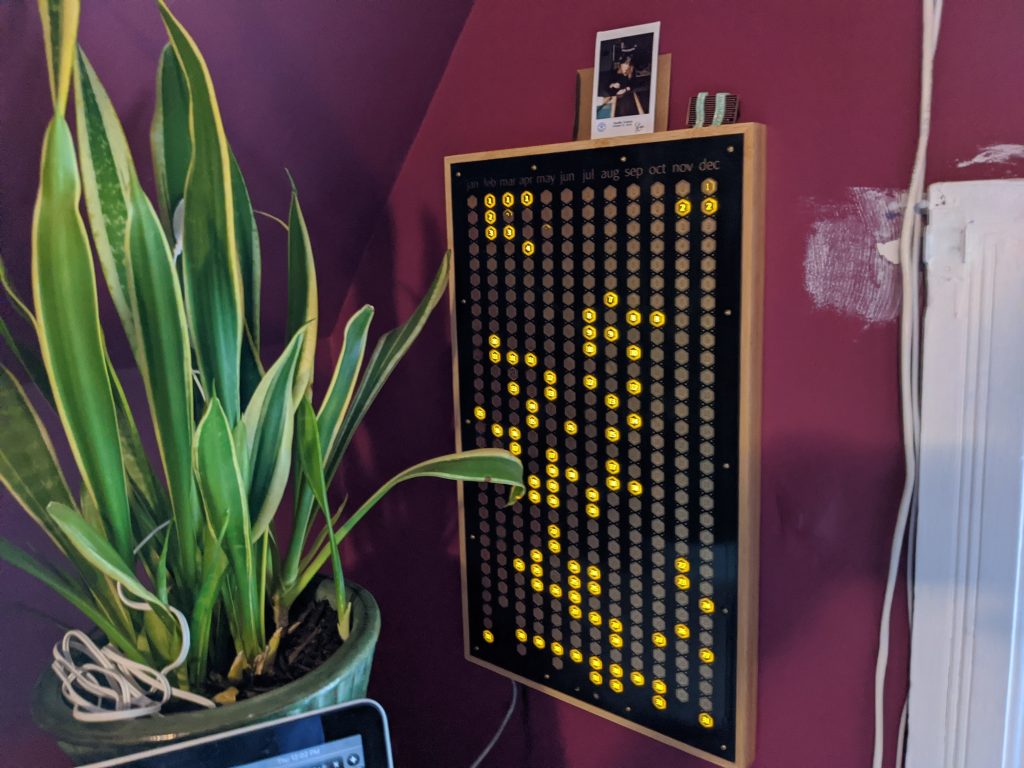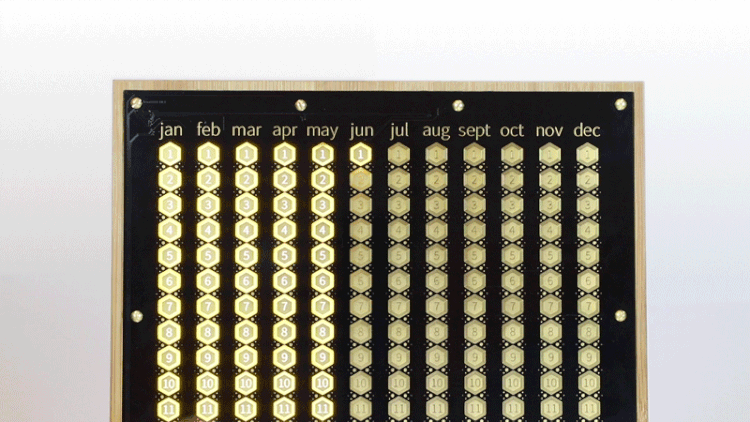
The Everyday Calendar by Simone Giertz is a personal affirmation system where a user makes a daily goal and is presented with a series of hexagonal copper numerals which illuminate when touched. By modifying the open-source code, a user is able to hack the Everyday Calendar into a matrix display and touch surface. The hardware is highly responsive, and minor tweaks to the example code and api can easily yield results. For this hack I have used implementations of Conway’s Game of Life and (of course) Tetris to display on the calendar, and to use the buttons as input for controls and parameters.
Simone is planning to make additional units and you can sign up to be notified about the continued project at: https://www.simonegiertz.com/every-day-calendar

Caution – beyond lay dragons – I can not stress enough how easily one can mess up when programming, and bricking this bootloader would be a sad day indeed, so be careful and follow arduino programming best practices
- If you are a beginner, do beginner tutorials first, flashing an LED may seem simple but it is the basis for all digital processing and user interface.
- Always select the correct ‘Board’ and ensure all other parameters are set, if you mess this part up you could brick your device! This project uses an ATMEGA328p at 3.3v and 8Mhz crystal. Checkout Simone’s detailed instructions on choosing the ‘Arduino Pro or Pro Mini’, and find the primary codebase and libraries for the Everyday Calendar project.
- If you are an advanced user and don’t need to be reminded, please review steps 1. and 2.
Everyday Life – an implementation of Conway’s Game of Life
explanation, base code, how i did it, my code
Everyday Tetris – an ‘alpha’ version of gameplay on the Everyday Calendar
explanation, base code, how i did it, my code
